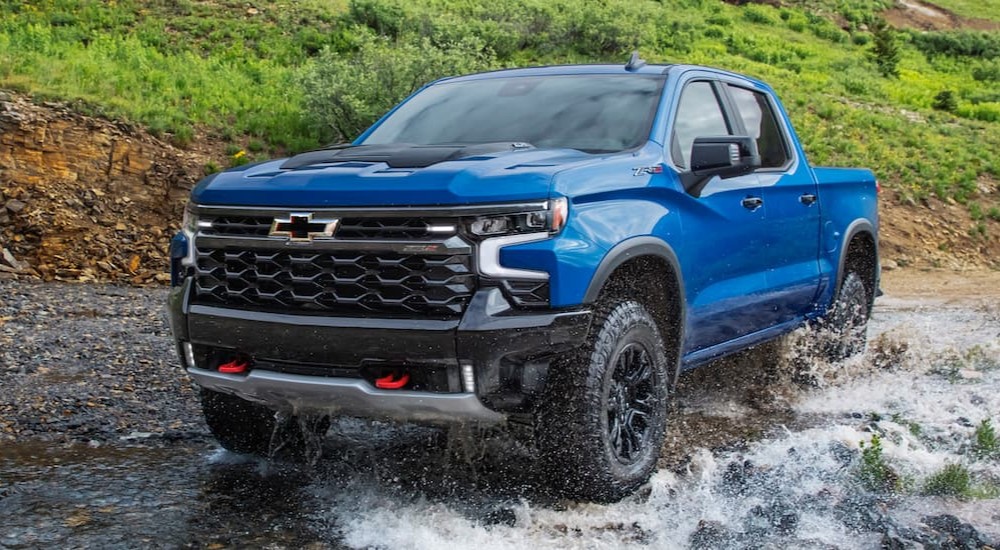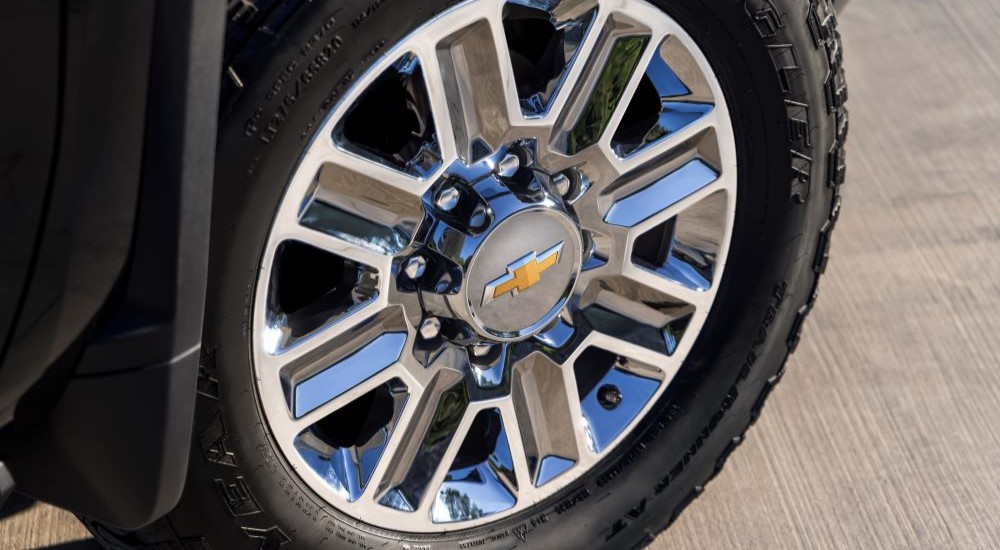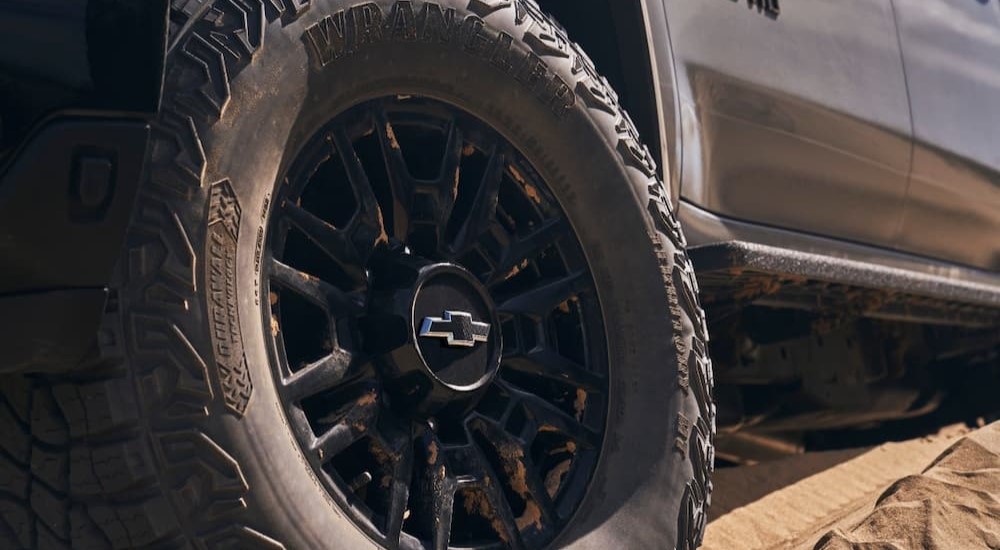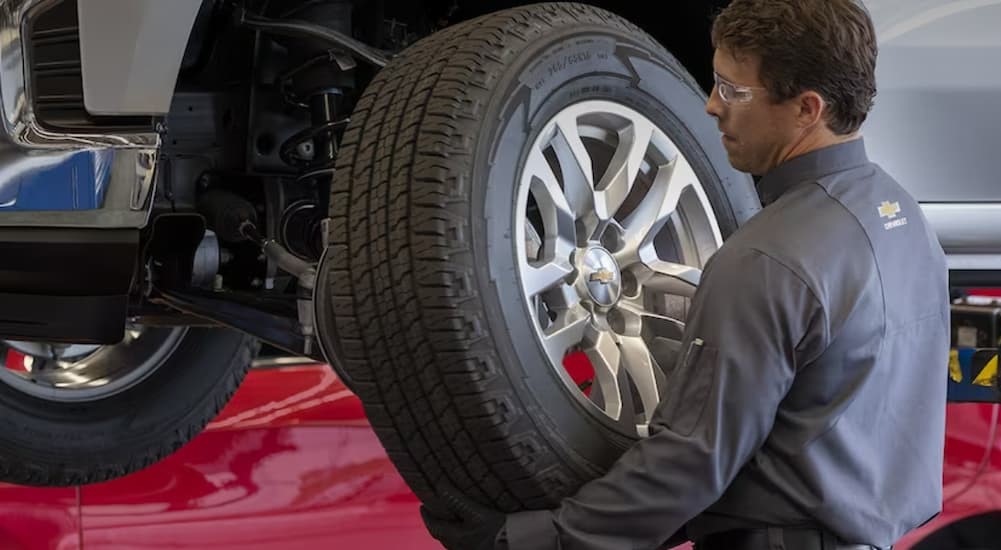The wheel was invented 5,500 years ago in Mesopotamia. Unlike other tools at the time, it wasn’t inspired by or based on anything in nature. Moreover, it wasn’t used for transportation but as a pottery wheel to help make other ingenious tools, like bowls and pitchers. Even so, the earliest iteration of the wheel eventually led to the axle—a combination that introduced the earliest form of transportation in tools like the wheelbarrow.
Chances are you’re not thinking about the invention of the wheel when you finally discover the perfect truck for sale. If you ever think about wheels, it’s likely because you realize they do more than ensure you can get from Point A to Point B; they play a pivotal role in how your truck performs in different conditions, as well as how it looks. This leads many drivers down the rabbit hole, looking for larger truck tires for practical and stylistic reasons. But what effect does tire size have on your ride? Is there such a thing as tires that are too big?
Tire Basics: Why They Matter
Your tires are your truck’s only point of contact with the road. Because of this, tire maintenance is critical. Uneven tread wear and bald tires can compromise your safety behind the wheel by dramatically impacting traction and minimizing the grip between the tire and the road. Many things can affect tread wear, too, which is why routine tire rotations are essential.
Tire size also plays a role in the truck’s performance and your safety on the road. Ideally, you want the best and largest grip possible, and larger tires offer this because they’re wider and thus have a greater surface area. With more area, more of the tire makes contact with the road, heightening the truck’s maneuverability and optimizing traction. But what else should you consider beyond the benefit of having a greater surface area?
The Benefits: Reasons for Larger Tires
Trucks are quite easy to customize without compromising their versatility. Even with a raised suspension or a lift kit, you can still reap the benefits of functional features like the bed and tailgate. But what happens when you add larger tires?
Alerting the Aesthetic
The factory tires on any truck are well thought out by the manufacturer to accommodate the truck’s intended purposes. For example, a truck designed to venture off-road typically rolls off the production line with all-terrain or mud-terrain tires because it’s destined to get a little muddy. However, most truck owners look forward to upgrading the stock tires to larger alternatives because of the stylistic impact, taking their truck from its factory version to something unique.
Improving Ground Clearance
One of the more obvious benefits of opting for larger tires is improving your truck’s ground clearance. Larger tires force the truck to stand taller, which does more than give your truck an aggressive and imposing stance. It also gives you the confidence to tackle rugged terrain, knowing your chassis is higher off the ground and safer from rocks, brush, downed trees, and other debris. Considering how expensive undercarriage damage is to have repaired, larger tires are a worthwhile investment and readily complement an updated suspension or lift kit.
Enhanced Traction
Think about using the sticky part of a Post-It Note to affix a photo to your fridge when you’re in a pinch. The sticky line is incredibly thin and won’t hold the photo for long because its surface area is so small. Now, think about using a piece of packing tape to accomplish the same task. The packing tape is wider and stickier, offering a bigger area of adhesion to keep your photo in place. The same concept applies to your tires.
The bigger the tire, the more grip or surface area your truck has to make contact with the road. This contact point is essential anytime you drive, especially if navigating slippery or wet conditions like rain, sand, dirt, or mud. Because of this, many off-roaders opt for larger tires, to improve their control, stability, and handling. More importantly, these benefits aren’t limited to the trail and can give you the confidence to navigate rainy or snowy conditions, knowing your tires are designed to handle the job.
The Disadvantages: Things to Consider
Is bigger always better? While larger tires have many advantages, there’s a balance between finding a larger tire that enhances your truck without compromising its performance or efficiency. In some cases, you can go too big, and your truck suffers the consequences.
Larger + Heavier = Reduced Efficiency
The stock tires on your truck are factored into its EPA-estimated fuel economy, which is also based on the weight of the truck and its powertrain. Altering that configuration can also impact your truck’s fuel efficiency, especially if you opt for bigger, oversized tires. How so?
Oversized tires require larger wheels, which adds more weight to your truck and increases the resistance and drag as your truck moves along the road. This additional drag means your engine works harder and burns more fuel, impacting fuel efficiency. For example, your truck may have an EPA-estimated fuel economy of 22 MPG in town, but opting for the biggest tires you can get drops that average to 11 MPG.
Responsiveness Can Suffer
For many truck owners, the point of upgrading to larger tires is to improve handling and capability on different types of terrain, from snow and rain to mud, sand, dirt, and gravel. However, finding the right balance is essential because tires that are too large can impact a truck’s responsiveness and handling.
Anytime you venture beyond the stock tire size, you alter the truck’s configuration and impact its handling. Oversized tires dramatically affect this because they weigh more and have larger surface areas, producing more drag, which yields slower acceleration and braking. Moreover, they can also impact the truck’s steering angle, which is why it’s essential to ensure your larger tires don’t rub against the wheel wells as you turn; you would risk damaging both your truck and your tires.
Should You Go Big?
Go big or go home? It’s a question truck owners often ask themselves. Maybe their next truck can be bought at a great price, and they already know the modifications to turn their vision for perfection into reality, but there’s also the question of whether bigger tires are better and necessary.
If you’re in this position, opting for larger tires may be non-negotiable because you love the aesthetic or know it’s necessary for your off-road desires. Whatever the case, it’s essential to shop smart and know your truck’s capabilities and the manufacturer’s recommendations before you dive into the rabbit hole of bigger tires. Anything beyond the recommended tire size will alter your truck’s performance, from the transmission and suspension to fuel efficiency and handling.
However, this shouldn’t discourage you from bringing your truck dreams to life. After all, most truck owners opt for suspension lifts to accommodate larger tires, getting more bang for their buck in a single service appointment. The best recommendation is to know the tire experts you’re working with and rely on their expertise to help guide your decision and the installation process. From there, it’s a matter of getting behind the wheel and putting it to the test on the open road.







